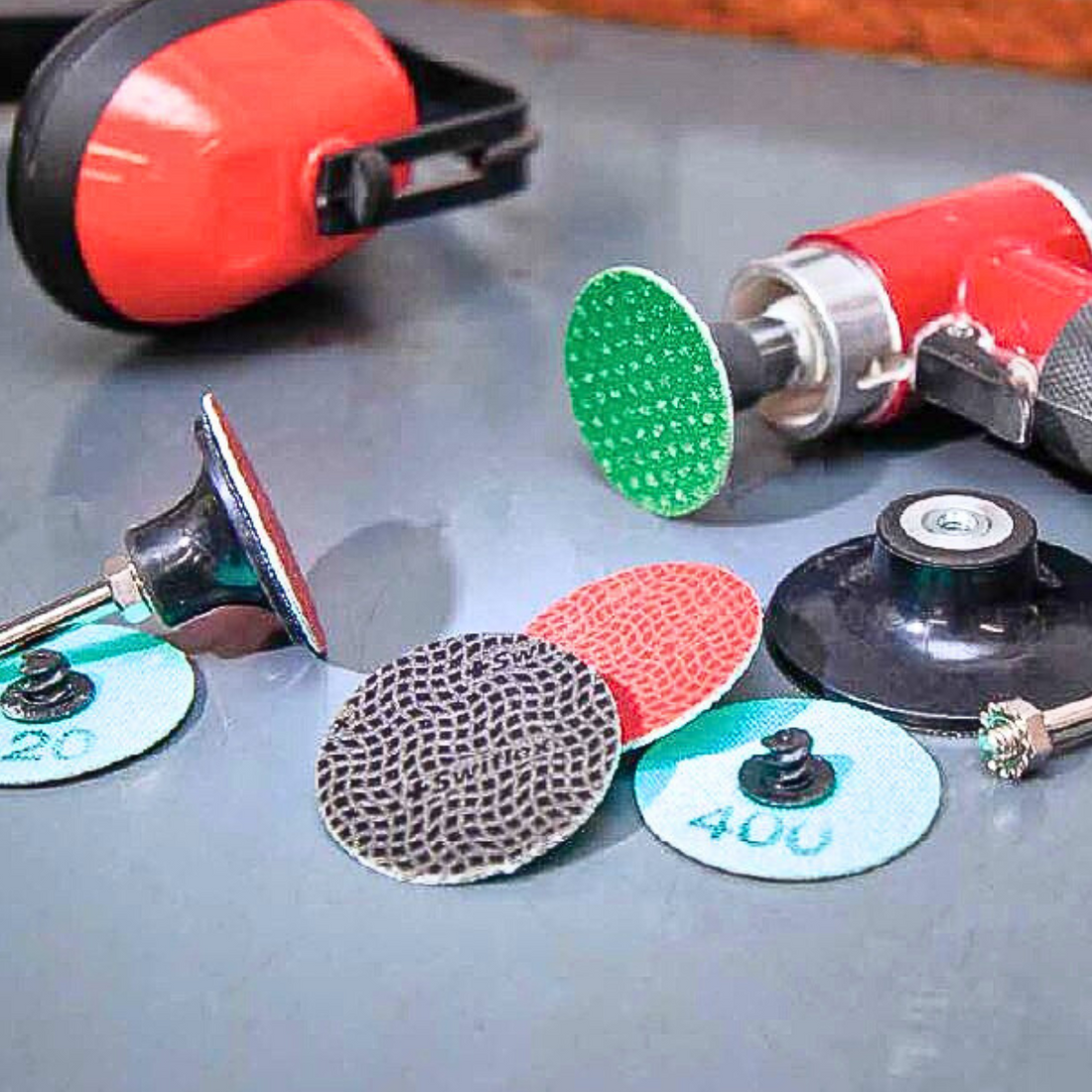KGS DIAMOND K-LOC™ Discs: Flexible Performance That Sticks With You
Share

For professionals who need reliable, high-performance abrasives, KGS DIAMOND K-LOC Discs are a go-to solution. Engineered for versatility and ease of use, these hook-and-loop diamond discs combine Swiss-quality construction with efficient material removal across a wide range of surfaces.
What Are KGS K-LOC Discs?
KGS K-LOC Discs are flexible diamond abrasive discs with a hook-and-loop backing for quick changes on orbital and rotary tools. The backing easily adheres to compatible pads, making them ideal for high-mix finishing environments where grit changes need to happen fast.
These discs are available in a full range of diamond grits (typically 60 to 3000) from aggressive material removal to ultra-smooth polishing.
Here’s an example of K-LOC performance in the field: the STS K-LOC Disc has consistently replaced competing abrasives among our customers—lasting up to 10x longer in demanding applications. Unlike standard resin-bonded options, the STS Disc features a metal-backed diamond construction, delivering exceptional durability, heat resistance, and cutting performance. It’s a clear demonstration of what’s possible when longevity and reliability come first.
Where Can You Use Them?
Thanks to their abrasion-resistant, flexible bond and strong diamond matrix, KGS K-LOC Discs are suitable for:
-Natural stone (granite, marble, engineered quartz)
-Ceramics and porcelain
-Glass and optical components
-Composite materials (carbon fiber, fiberglass)
-Hard coatings and metals (chromium carbide, thermal spray layers, stainless steel)
Use them wet or dry, depending on your process and desired finish. Wet use is recommended for heat-sensitive materials or when working with finer grit.
KGS K-LOC Discs are trusted worldwide across construction, fabrication, aerospace, and marine industries. We stock popular grits and sizes—and we can custom-make K-LOC Discs to suit your specific application requirements.



